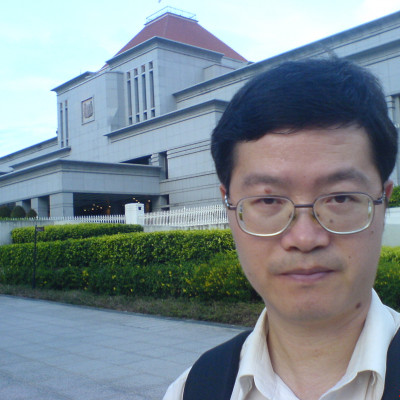Not Logged In
[Google Meet] You need to be logged in, be a member, and get a ticket to attend this session.
Paper Presentation Bilingual Education Policy Regular Presentation (30 min)
The urban-rural divide comparison structure of bilingual education
This study intends to create a conceptual structure for urban-rural divide comparison of bilingual education. Researchers applied Delphi technique based on twelve experts (including scholars) to create an urban-rural divide comparison structure of bilingual education. The researchers created a preliminary structure through literature review, field observation, and interview with educational practitioners, and then provided this structure draft for twelve experts to review and score each dimension and item in the structure. After the first run feedback, researchers revised the structure with all experts’ feedback, and then the experts provided their second run revising. Through four-run revision, all experts reached the consensus on the structure. The research has built the urban-rural divide comparison structure of bilingual education that includes six dimensions: bilingual competency, bilingual curriculum and pedagogy, bilingual using environment, bilingual resources, technology, and confliction. The bilingual competency dimension includes four subcategories: teacher bilingual competency, student bilingual competency, and administrator bilingual competency, and parent bilingual competency. The bilingual curriculum and pedagogy dimension includes bilingual curriculum design, bilingual instruction, and bilingual activities. The bilingual using environment dimension includes school bilingual environment, community bilingual environment, and family bilingual environment. The bilingual resources dimension includes English professional classroom, library, native speaker, and English cram school. The technology dimension includes online access equipment, internet accessing, and bilingual online content and resources. The confliction dimension includes learning burden (one more language to learn and conflict with other learning), mother-tongue language (benefit from mother tongue language or threaten to mother tongue language), culture identity confliction (cultural identity and nationality identity). The research result could act as a criterion to evaluate the urban-rural divide of bilingual education in individual school and provide a clear guide for educators and administrators to apply a remedy measure on the specific dimension and subcategory.
-

A bilingual education researcher and practitioner who would like to exchange bilingual research and teaching experiences or work together online or on site with other bilingual scholars and practitioners locally and globally. Professor in Department of Education, National Taitung University. UC Santa Barbara Visiting Scholar 2017-2018. Fulbrighter 2017-2018. Personal website https://sites.google.com/view/nttu333
-

The Principal of National Taitung Commercial Vocational Senior High School. Major is educational administration and policy. More interested in bilingual education for senior high schools.
-

Foreign English teacher at National Taitung Senior High School.
-

Associate Professor
-

Assistant Professor, Department of Early Childhood Education, Taitung University.
-

I`m the Part-time University Lecturer, National Taitung University、Principal of Taiyuan Elementary School、PhD Student in Department of Education, National Taitung University.我是臺東縣東河鄉泰源國民小學校長、國立臺東大學兼任講師、國立臺東大學教育學系教育研究所博士研究生。